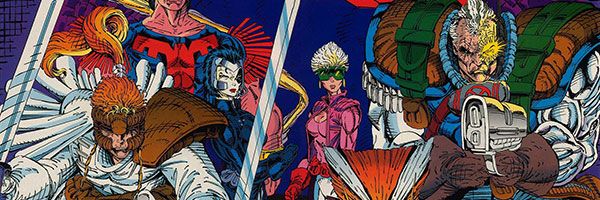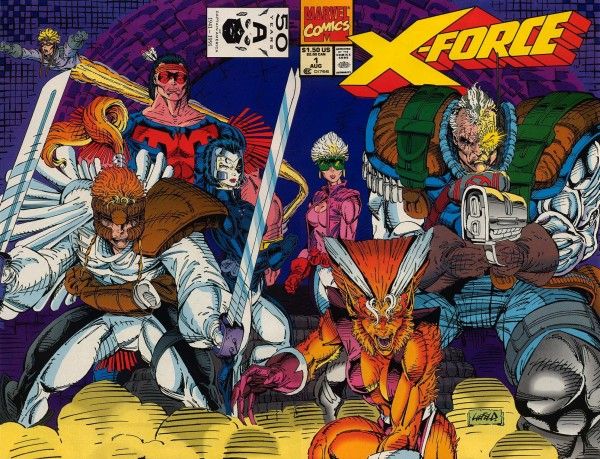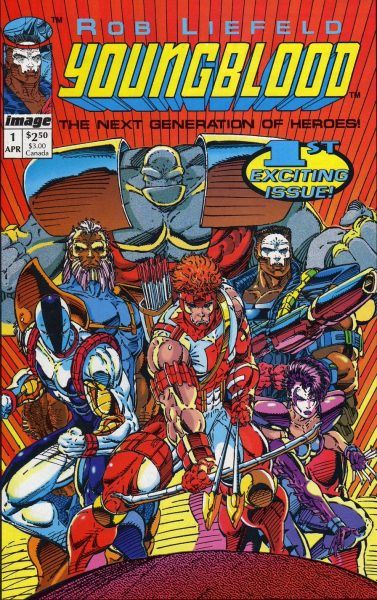In the halcyon days of the 1990s, the comic book business was a-booming. Not only were folks buying up honest-to-goodness paperbound comic books at an unprecedented rate, but other comic-book related mediums and revenue streams, from movies to TV shows to action figures, were popping up and revealing themselves to be lucrative revenue streams. Rob Liefeld, who was primarily working for Marvel Comics at the time, began to see where these revenue streams were headed -- and they weren't to him or his fellow artists. And it inspired him to co-found one of our most influential comics companies ever.
Or, as he put it bluntly in an interview with our own Coy Jandreau, "Image [Comics] only happens because Marvel made every character I created into a toy before X-Force was published." That's right: Image Comics, the creator-owned comic publishing company responsible for such iconic works as Spawn, The Walking Dead, and Kick-Ass, began in primary part because Liefeld saw how the comics business was getting more involved in these ancillary revenue streams, and felt as though he and his fellow artists, writers, and creators needed to take ownership if they wanted their livelihoods to remain stable and not taken advantage of:
"The backstory: I remember the time of night, it was 6pm, summer evening, the phone rang, my editor named Bob Harras said, 'Rob, just wanted to let you know. The toy guys were just here, and they're making all of the X-Force guys into toys.' I said, 'But the comic doesn't come out for three months.' [He said,] 'It doesn't matter, they came in, they flew in to look over what they would wanna make toys.' I said, 'Time out. Bob, I just saw the first line of X-Men toys -- Cyclops, Wolverine, the first X-Men action figure line ever, in 1991.' And he said, 'Yep. And you're the second wave.' And I go, 'You're skipping all of that history?' He goes, 'They say your stuff is really toyetic. You're toyetic.' That's an actual word."
Savvy comic book film historians may flag that word as being used on the late, great Joel Schumacher's much-maligned Batman & Robin film (as in, "I was in merchandise meetings with Walmart and K-Mart and McDonald's, and you're being told to make the film more 'toyetic', which means you can sell toys off the back of it"). It's interesting to hear the concerns of that word as it related to comic books began sooner. Liefeld continues:
"So when they announce that to me, I'm gonna tell you, I'm like 'Wait, Cable, and Shatterstar, and Deadpool, and Kane, and Domino, and Stryfe are all headed to the toy aisle?' So back then, kids, we used phones that you held to your [ear] with a cord, and I put it back, and I said, I swear to you, Coy, I remember looking out the window -- I was on the second story of my studio -- and I go, 'I'm a toy designer. I'm a toy designer!' And I remember going, 'Well, I should probably own the next toys. Now that I'm not just doing great-selling comics, but I have plastic, I need to be a toy designer.' And because I had so many other characters, there was actually two that I was putting into Marvel's [ownership] -- Prophet was one of them that I had for another storyline -- and I reeled them back in, and said, 'You know, Marvel, I've already given you like 30 characters. It's a great deal, that's why I did it. I knew very much what I was doing. Because of the actions of the editorial team in the '80s, you were able to participate in action figures, royalties, all of these extras that help contribute and make a better life for cartoonists and artists.' So, we then start Image, because I'm gonna own the next stuff I do."
Beyond Liefeld, Image Comics was also co-founded by comic luminaries like Erik Larsen, Jim Lee, Todd McFarlane, Whilce Portacio, Marc Silvestri, and Jim Valentino. And as they started making (and owning) their own creations, including Liefeld's own Youngblood, the toy and action figure offers started coming in:
"A year and a half later, I'm going into Mattel in Southern California, getting the card swiped as these giant Get Smart doors open, and you go another ten feet and you swipe the card, and another [set of] steel doors [open], and I'm like, 'I'm in Get Smart! Where's Agent 99?' I couldn't believe the security of these toy companies. But then they led me in. They had made molds. They had made action figures of Youngblood, trying to woo me to get to sign the deal. And my attorney's like, 'No! You tried to screw George Lucas, you're not screwing Rob!' And I was like, 'Oh, this is funny.' My attorney at the time was representing George Lucas, so he was very protective. I then took multiple bids. Todd McFarlane said, 'I'll outbid everybody, I don't want the Image toys leaving. I wanna keep you in the fold, I want you to be companion to Spawn and what works.' That's what he was able to collect out of all the Image guys. And he beat everybody's offer at the time. But Image Comics really was because of the dearth of plastic."
There you have it, dear reader. Because of the trend of turning existing comic book characters into real, touchable things, we got a brand new company with brand new ideas and characters. So remember: The next time you're struggling with the complications of an idea or dream, the inspiration can come from something very simple.
Check out Liefeld talking us through this story below, and be on the lookout for the full interview soon. For more on his creative works, here's Liefeld on the possibility of a Deadpool 3.



